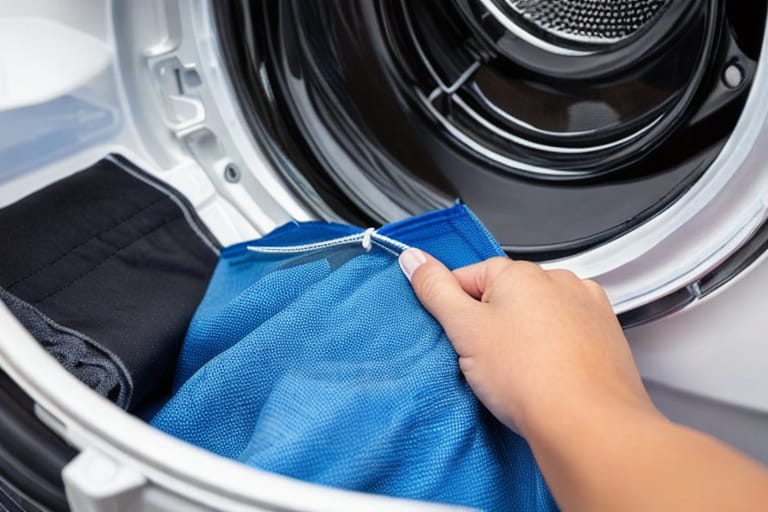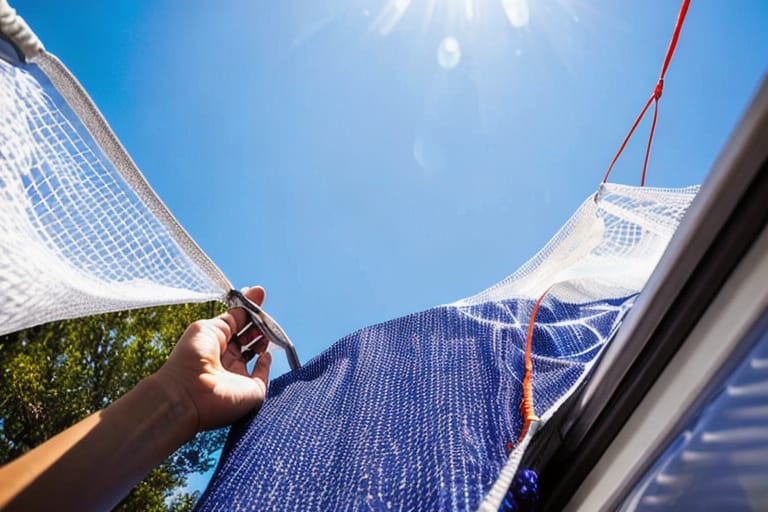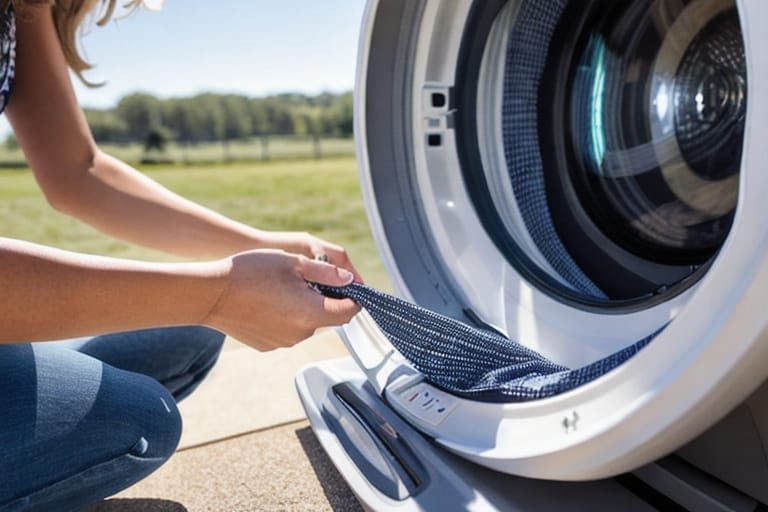Down comforters are a popular type of bedding prized for their lightweight warmth and plush feel. But concerns over health risks, sustainability, and animal welfare mean shoppers have a lot to consider before purchasing one. This beginner’s guide covers everything you need to know about whether down comforters are truly safe.
What Defines a Down Comforter?
Before assessing the safety of down comforters, it helps to understand what they are. A down comforter consists of the following components:
- Exterior shell – Usually a fabric like cotton, cotton blend, or microfiber. Provides the look and feel.
- Interior fill – Clustered down fibers from ducks, geese, or other waterfowl which provide insulation and loft.
- Baffle box design – Interior walls that prevent fill from shifting around. Keeps insulation even.
Down comforters are valued for traits like:
- Warmth – The fluffy fill traps air to retain heat. Provides insulation without weight.
- Softness – The smooth down fibers feel plush and cushiony.
- Durability – Quality down comforters can last over 10 years with proper care.
- Breathability – The fill allows airflow to prevent overheating.
Below we analyze the safety considerations around Down’s health risks, eco-impact, animal welfare, and more.
Health and Allergy Considerations
One of the biggest concerns around down comforters is allergies and other health risks. We break down the facts:
Myth vs. Reality on Down Allergies
Myth: Down comforters are stuffed with feathers which cause allergies.
Reality: While many people assume down = feathers, they refer to different materials:
- Down – The cluster fiber layer closest to a bird’s skin that provides insulation. Soft and fluffy.
- Feathers – The longer exterior fibers. Rigid, smooth, and shaped like quills.
The fluffy down fill commonly used in comforters rarely triggers allergies. Feathers contain more allergen proteins.
Common Down Allergy Triggers
While the down itself if hypoallergenic, other aspects can trigger reactions:
- Dust mites – Microscopic bugs that live on fabric and shed allergens. Present on any bedding.
- Mold or mildew – Can grow on dirt or moisture trapped in down. Caused by improper drying or storage.
- Chemical residues – solvents or detergents remaining from production or washing.
Proper care and washing prevent most reactions caused by these triggers.
Recognizing Down Allergy Symptoms
Reactions can manifest as:
- Coughing or wheezing
- Runny, stuffy nose
- Itchy skin, eyes, or throat
- Hives
Severe cases may progress to anaphylaxis. Discontinue use if reactions develop.
Options for Down Allergy Sufferers
Those sensitive to down have alternatives:
- Down alternative comforters – Filled with hypoallergenic synthetic fibers instead of down. Provides similar warmth and feel.
- Allergy covers – Encase the comforter in a special cover that creates a barrier to allergens.
- Frequent washing – Regular cleaning removes allergens that accumulate over time.
Overall, while not hypoallergenic itself, quality down comforters present low allergy risks if cared for properly. Those struggling with reactions have alternative options.
Health Beyond Allergies
Beyond allergic reactions, are there other health threats posed by down bedding?
Respiratory Conditions
Some health bodies have warned that bedding could aggravate pre-existing respiratory issues like asthma.
However, little evidence exists showing down it causes problems or complications. Those with respiratory sensitivity can opt for synthetic down alternatives if concerned.
Toxin Risks
Down’s risks depend somewhat on its source and production methods.
- Feathers plucked from live birds – Cause wounds vulnerable to bacteria. Risks from feces contamination. Banned in most major producing regions but still an issue in some countries with fewer regulations.
- Improper cleaning – Harsh chemicals or inadequate sterilization can leave dangerous residues. Certifications help validate production hygiene.
Reputable brands source responsibly and follow protocols to prevent biological or chemical risks. But toxic exposures remain an issue with lower-end unregulated down.
The Bottom Line on Health
When sourced ethically and cared for properly, medical research supports that down bedding presents minimal health hazards for most. Those struggling with reactions have alternative options. But risks do remain for respiratory illness suffers or with poor quality.

Environmental Impact and Sustainability
Producing the volume of down used in bedding carries an ecological impact. We analyze key considerations around sustainability.
Down’s Carbon Footprint
- Raising birds for food production already generates greenhouse gas emissions. Using waste feathers and down reduces impact rather than driving new production.
- Transportation from largely Asia-based production creates emissions. But down is lightweight so transports efficiently.
- Washing down uses water and energy. But machine washing synthetic alternatives has a similar footprint.
Ethical Sourcing
- Historically providers plucked feathers from live geese subjected to painful abuse. Now banned in most major producing countries but still an issue. Certifications help enforce ethical protocols.
- Sourcing down displaces food production driving further carbon emissions. Using a waste byproduct from the existing poultry industry reduces this impact.
The Bottom Line on Sustainability
Down production carries an ecological impact through farming and transportation global emissions. But utilizing a waste product from existing food systems beats driving new production. Checks remain around ethical sourcing practices.
Animal Welfare Concerns
Down comforters have faced controversy over animal cruelty in sourcing:
Live-Plucking Horrors
- Painful practice of plucking feathers from live birds without anesthesia
- Banned under law but still practiced in remote regions
- Allows more feathers collected over a bird’s lifetime
Force-feeding for Foie Gras
- The practice of force-feeding birds to fatten livers for foie gras pate
- Outlawed recently in over a dozen countries
- Creates fatty diseased livers later used for down-production
Progress Through Certification
- Responsible Down Standard (RDS) certifies ethical treatment of birds
- Confirmed over 900 companies now RDS-certified
- Over 50 million birds now under humane protection
When sourced ethically under proper certification programs, down comforters assure acceptable welfare standards. But abuse remains an issue needing continued advocacy and enforcement.
Comparing Down vs. Alternative Comforters
For shoppers debating choices beyond health and ethical factors, how do down and down-alternative comforters compare on other attributes?
Down vs. Alternative Comforters
| Attribute | Down Comforters | Down-Alternative Comforters |
|---|---|---|
| Durability | Lasts 10+ years | Average 5-8 years |
| Warmth | Superior insulation and loft | Provides warmth but less than down |
| Softness | Ultra-plush, pillowy feel | Often less soft than down |
| Cost | $200 – $500+ | $100 – $300 |
| Care | Dry clean or wash gently | Machine washable |
Down alternative fills like Primaloft or polyester provide an affordable, hypoallergenic mimic to down. But down still proves hard to beat on feel and longevity. Shoppers need to balance priorities around health risks, ethics, sustainability, and performance needs.
Caring for a Down Comforter
To maximize benefits while minimizing risks, proper care and maintenance prove essential:
Cleaning and Washing
- Wash down comforters 2-3 times per year to clear allergens
- Machine wash on delicate cycle using mild detergent alternative and tennis balls
- Reshape and air dry thoroughly before storage or use
Storing in Off-Season
- Store in breathable cotton case during warmer months
- Sprinkle in lavender sachets to repel insects and prevent musty smells
- Fold flat and press seams to prevent clumping and maintain loft
Follow guidelines from the National Down and Feather Council to safely clean and store down bedding.
Purchasing Considerations
Several factors go into finding your perfect down comforter:
Fill Power
- Measurement from 0 to 900+ indicating fluffiness and insulation
- Higher numbers equal more loft and warmth
- Pay more for fill powers over 600 for lightweight heat
Construction Quality
- Baffle box design prevents shifting and clumping
- Look for fine, consistent stitching without gaps
- Soft, durable outer shell fabrics feel best
Ethical Sourcing
- Seek brands with certifications like RDS
- Ensure no live-plucking or force-feeding
- Support positive animal welfare and labor practices
Finding the right balance on budget while meeting your needs around warmth, feel, and ethics takes research. But hundreds of quality options exist meeting even stringent safety standards.

The Bottom Line: Are Down Comforters Safe?
When responsibly sourced and cared for…
- Health risks prove minimal for most but still remain for some. Allergy suffers have alternative options.
- Eco-impact stays reasonable as production improves. Additional progress needed on transportation.
- Animal welfare now assured acceptable through leading certifications. But abuse issues linger needing continued advocacy.
So while down comforters may not match the perfect safety record of synthetic alternatives, major progress by brands ensures responsible models provide similar warmth and luxury without sacrificing ethics or wellbeing.
Frequently Asked Questions
What’s the difference between down and feather bedding?
Down refers to the fluffy, insulating cluster fibers attached closest to a bird’s skin, while feathers are longer, smoother exterior fibers that overlap to form the plume and provide structure and water resistance. Down comforters utilize pure down fill, which tends to feel softer and trap more body heat.
Is down or down alternative better for allergies?
Down alternative comforters with synthetic fills like polyester or Primaloft prove hypoallergenic, making them the best choice for severe allergy suffers. Quality down comforters should trigger few reactions if the fill remains separated from allergen sources during production. But sensitive individuals may still react to proteins found in natural down itself.
How often should you wash a down comforter?
Industry standards suggest washing down comforters 2-3 times per year to clear out allergens, body soils, and dust mites. Frequent washing maintains insulation, extends durability, and prevents buildup of irritants. Use a mild detergent alternative on the delicate cycle.
What is fill power and why does it matter?
Fill power rates the fluffiness and insulation capacity of down, indicating how many cubic inches one ounce of down fills. Higher numbers over 600 provide exceptional warmth for their light weight. Premium down comforters with higher fill power last for years and keep sleepers cozier.
How do I know if a down comforter brand is ethically sourced?
Responsible down production prohibits the painful practice of live-plucking feathers from living birds. Reputable brands comply with standards like the Responsible Down Standard (RDS), which certifies humane treatment during down and feather collection. The certification tracks supply chains, audits sources, and confirms ethical practices.
What’s the best way to wash and dry my down comforter?
Use a front loading machine, mild detergent alternative, and tennis balls on the delicate cycle. Air dry completely—never machine dry a down comforter! Fluff the baffles gently and store flat until fully dry to maximize loft and insulation.








